Abstract
To test the hypothesis that educational information provided via the web would not only be accessed by our patients, but could also reduce postoperative pain following ambulatory surgery, we enrolled 195 patients into a randomized controlled study. Fifty-two percent of our ambulatory surgery patients already knew how to use and had access to the Internet. Eighty-five percent of our study patients accessed the resources made available to them on the web site. Patients who had access to the pain management information on the ambulatory surgery web site reported significantly less postoperative pain on arrival to their home after surgery (p < 0.016) and into the night after surgery (p < 0.013). These patients also reported significantly less postoperative pain for the day immediately following surgery (p < 0.037). We conclude that using the Internet to provide just-in-time patient education can significantly effect the clinical outcome of care.
Full text
PDF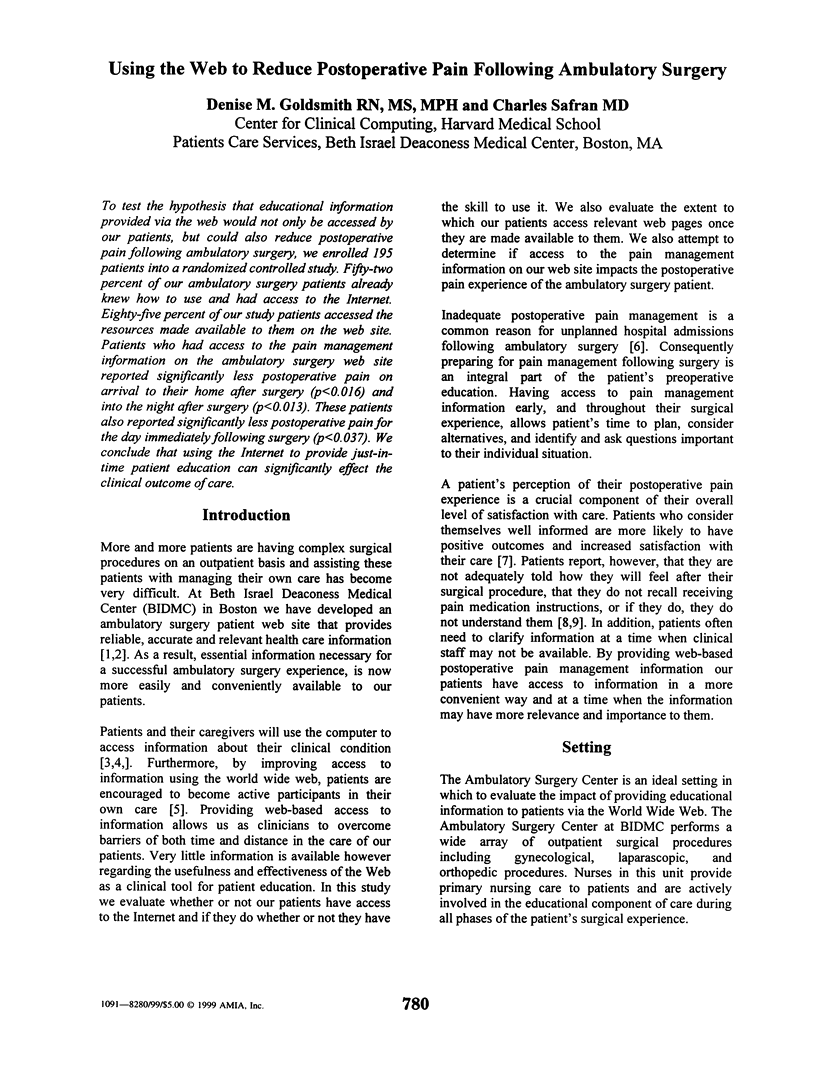
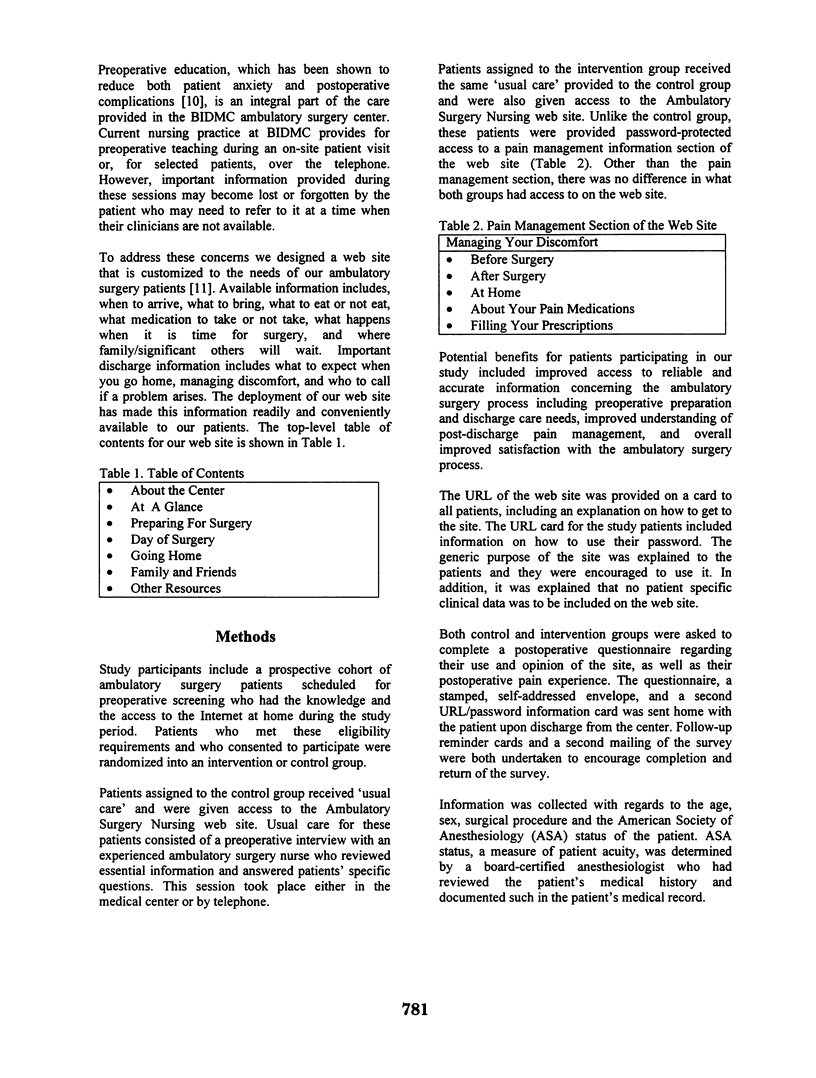
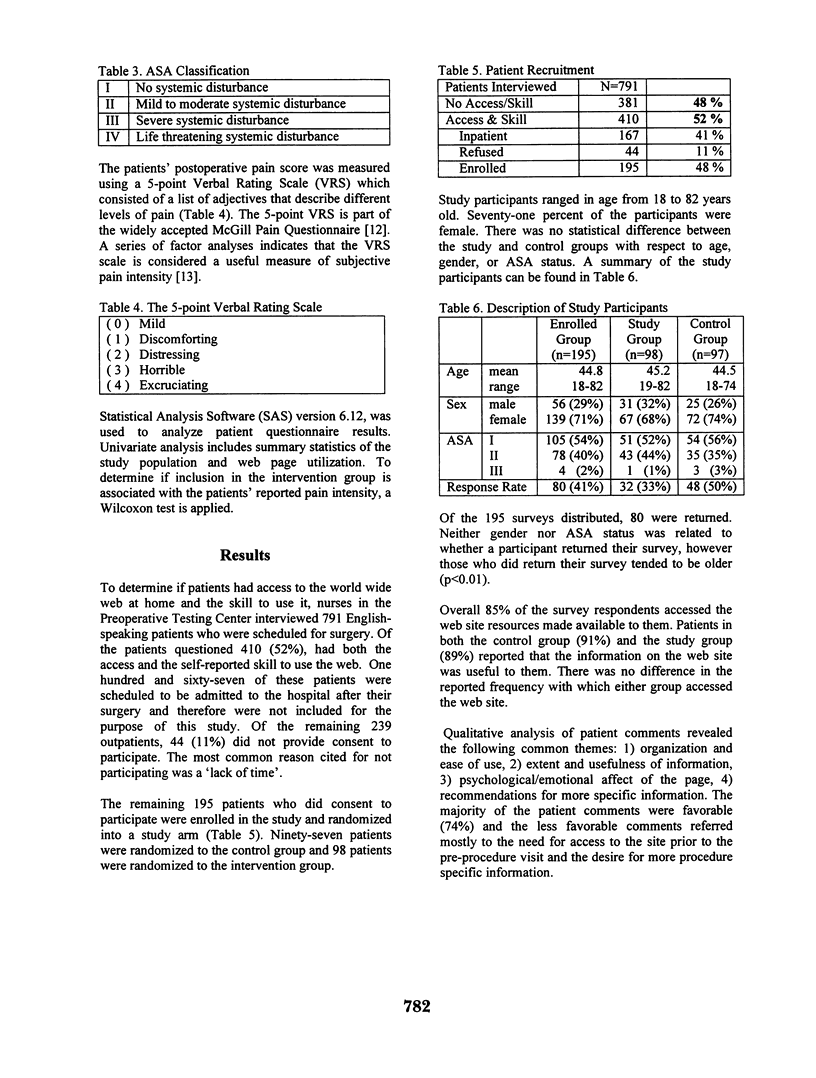
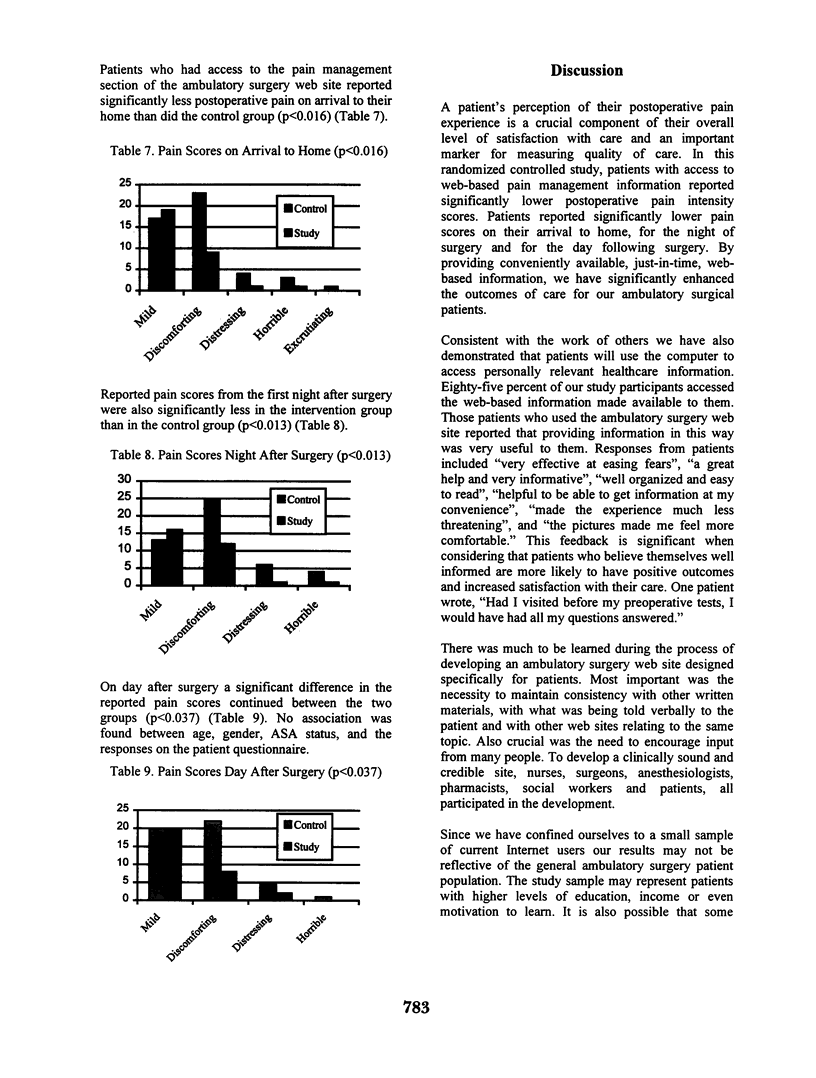
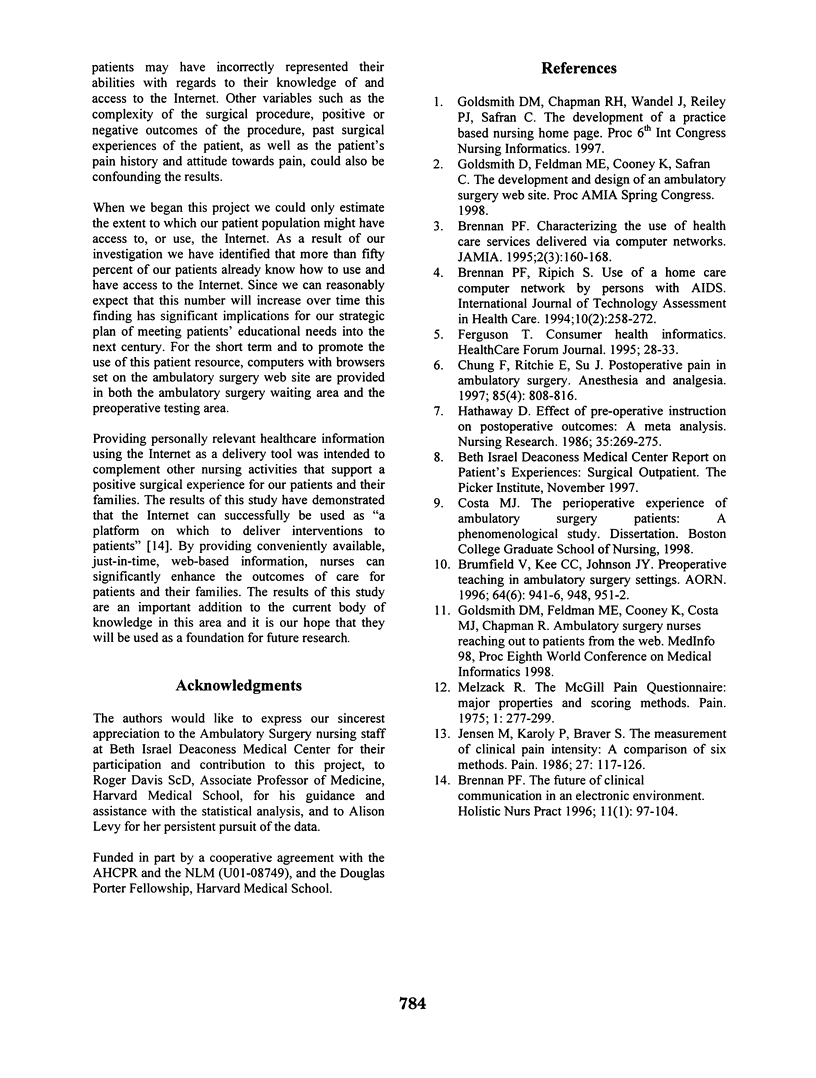
Selected References
These references are in PubMed. This may not be the complete list of references from this article.
- Brennan P. F. Characterizing the use of health care services delivered via computer networks. J Am Med Inform Assoc. 1995 May-Jun;2(3):160–168. doi: 10.1136/jamia.1995.95338869. [DOI] [PMC free article] [PubMed] [Google Scholar]
- Brennan P. F., Ripich S. Use of a home-care computer network by persons with AIDS. Int J Technol Assess Health Care. 1994 Spring;10(2):258–272. doi: 10.1017/s0266462300006218. [DOI] [PubMed] [Google Scholar]
- Brennan P. F. The future of clinical communication in an electronic environment. Holist Nurs Pract. 1996 Oct;11(1):97–104. doi: 10.1097/00004650-199610000-00013. [DOI] [PubMed] [Google Scholar]
- Brumfield V. C., Kee C. C., Johnson J. Y. Preoperative patient teaching in ambulatory surgery settings. AORN J. 1996 Dec;64(6):941-6, 948, 951-2. doi: 10.1016/s0001-2092(06)63605-3. [DOI] [PubMed] [Google Scholar]
- Chung F., Ritchie E., Su J. Postoperative pain in ambulatory surgery. Anesth Analg. 1997 Oct;85(4):808–816. doi: 10.1097/00000539-199710000-00017. [DOI] [PubMed] [Google Scholar]
- Ferguson T. Consumer health informatics. Healthc Forum J. 1995 Jan-Feb;38(1):28–33. [PubMed] [Google Scholar]
- Hathaway D. Effect of preoperative instruction on postoperative outcomes: a meta-analysis. Nurs Res. 1986 Sep-Oct;35(5):269–275. [PubMed] [Google Scholar]
- Jensen M. P., Karoly P., Braver S. The measurement of clinical pain intensity: a comparison of six methods. Pain. 1986 Oct;27(1):117–126. doi: 10.1016/0304-3959(86)90228-9. [DOI] [PubMed] [Google Scholar]
- Melzack R. The McGill Pain Questionnaire: major properties and scoring methods. Pain. 1975 Sep;1(3):277–299. doi: 10.1016/0304-3959(75)90044-5. [DOI] [PubMed] [Google Scholar]


